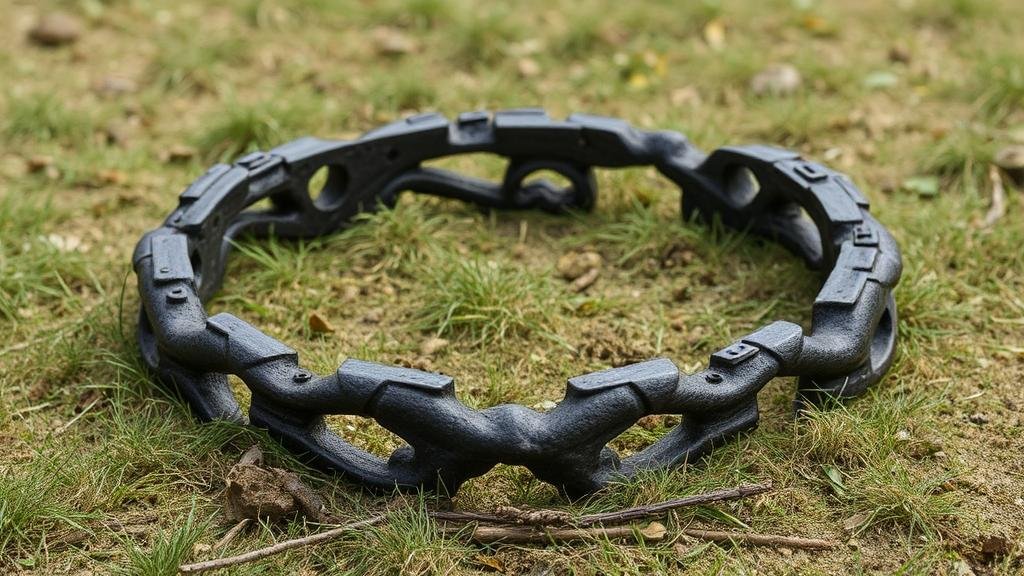Exploring the meaning of the “Tewkesbury Rings,” mysterious iron artifacts of unclear origin.
Exploring the Meaning of the Tewkesbury Rings: Mysterious Iron Artifacts of Unclear Origin
Located near the town of Tewkesbury in Gloucestershire, England, the Tewkesbury Rings have sparked intrigue and speculation since they were first unearthed in the late 19th century. These mysterious iron artifacts, often described as circular or ring-shaped, are shrouded in uncertainty regarding their usage, origin, and significance. This article delves into the history, theories, and cultural implications surrounding the Tewkesbury Rings, offering insights into their enigmatic nature.
Historical Background of the Tewkesbury Rings
The Tewkesbury Rings were discovered during agricultural work in the late 1800s, with the initial finds occurring around 1885. As farmers plowed their fields, they unearthed these unusual artifacts, prompting local historians and archaeologists to investigate further. Initial examinations suggested that the rings were likely crafted from wrought iron, indicating a historical metalworking technique prevalent in medieval times.
Tewkesbury itself has a rich history, dating back to the Roman era, making it a fertile location for archaeological discoveries. Historical records indicate that Tewkesbury was a significant settlement during the Anglo-Saxon period and subsequently during the Norman conquest in 1066. areas long-standing history raises questions about the contextual significance of the Tewkesbury Rings within this timeline.
Theories About Their Purpose
Many theories abound regarding the purpose of the Tewkesbury Rings. While their exact functionality remains unconfirmed, several prominent hypotheses include:
- Ceremonial Use: Some researchers speculate that the rings could have been used in pagan rituals or as part of a ceremonial assemblage. Their circular form is often associated with symbols of eternity and cyclical nature in various cultures.
- Tools or Uses: Others propose that the rings may have served as tools, possibly for agricultural or domestic purposes. This theory is bolstered by the presence of similar artifacts found across Europe that exhibit functionality associated with farming.
- Decorative Items: Given the artistic craftsmanship displayed in some of the rings, it is also plausible that they were decorative pieces, perhaps worn by individuals of status or used in bridal attire.
Archaeological Discoveries and Findings
Various archaeological excavations around Tewkesbury have uncovered additional artifacts and ecofacts, creating a broader picture of the region’s historical context. These discoveries include:
- Roman coins, suggesting economic activities during the Roman occupation.
- Anglo-Saxon burial sites that provide evidence of cultural practices of the time.
- Tools and pottery fragments that illustrate daily life and craftsmanship in medieval Tewkesbury.
The presence of such artifacts indicates that the Tewkesbury Rings may be part of a larger narrative about the people who lived in the area and their belief systems.
Cultural Significance and Legacy
The Tewkesbury Rings continue to capture the interest of historians, archaeologists, and the general public. They have become a symbol of the region’s rich historical tapestry, offering insight into the lives and beliefs of past communities. Activities like local festivals and guided tours often highlight these artifacts, further embedding them within Tewkesburys cultural identity.
Also, the mystery surrounding the rings serves to spark curiosity and engagement with historical preservation. As people seek answers, they are likely to support archaeological investigations and educational initiatives, ensuring that the complexities of history are explored and understood.
Conclusion: A Call to Exploration
The Tewkesbury Rings remain an enigma, with their exact purpose and origin still unclear. But, they provide a fascinating glimpse into historical practices, belief systems, and the craftsmanship of ancient cultures. As ongoing research seeks to unveil their mysteries, the rings serve not only as artifacts of curiosity but also as a catalyst for community engagement with history.
For those interested in archaeology and historical research, the Tewkesbury Rings highlight the importance of continued exploration and preservation of heritage. Engaging with such artifacts empowers individuals to contribute to the narrative of the past, fostering a deeper understanding of humanitys shared history.



